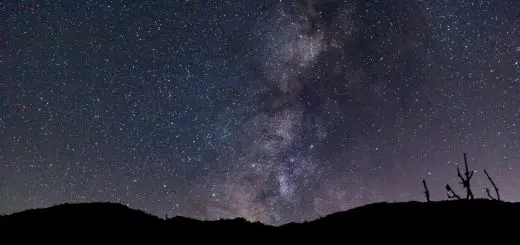The Secrets of the Nazca Lines in Peru

Looking for more amazing products? Check out our online store and explore our collection here! Happy shopping!
Before diving in, please note: This post is for informational purposes only. If you’d like to know more about how we approach topics, feel free to check out our friendly Disclaimer Page.
Hey there, amazing readers! 
We’re committed to delivering quality posts, and your support (even just sticking around despite the ads) means everything to us. So, bear with us, and thanks for helping us keep the good vibes rolling. Now, on to the fun stuff!
TRANSLATE BUTTON AT THE END OF THE ARTICLE
A Quick Overview
The Nazca Lines in Peru are one of the most enigmatic wonders of the ancient world.
Stretching across the arid plains of the Nazca Desert, these massive geoglyphs depict various animals, plants, and geometric shapes, stretching up to hundreds of meters.
Their origins and purpose remain a tantalizing mystery, drawing adventurers, scholars, and curious travelers alike.
In this article, we will explore the secrets of the Nazca Lines, delving into their history, purpose, and how they continue to captivate our imaginations today.
Unveiling the Nazca Lines: A Peruvian Mystery
From the moment I heard about the Nazca Lines, I was hooked.
Imagine walking across a vast, dry landscape dotted with ancient carvings that can only be fully appreciated from the sky.
These geoglyphs, created between 500 BCE and 500 CE, are an artistic masterpiece that has stood the test of time.
But how did they come to be?
The Nazca Lines consist of over 800 straight lines, 300 geometric shapes, and 70 animal and plant figures.
They range from simple lines and shapes to elaborate representations of creatures like hummingbirds, spiders, and monkeys.
How did the Nazca people create such enormous designs without the modern technology we have today?
Scholars have been puzzled over these questions for decades.
Some believe the lines were made by removing the top layer of reddish-brown iron oxide pebbles, revealing the lighter earth beneath.
Others suggest that they used basic surveying techniques to ensure their accuracy.
The sheer scale of these designs suggests a communal effort, with entire communities possibly coming together for their creation.
As we dive into the history of the Nazca culture and the purpose behind these spectacular lines, it’s essential to remember that these ancient peoples had a deep understanding of their environment.
They lived in a harsh desert climate, yet they thrived, developing intricate irrigation systems and a rich spiritual life.
What Are the Nazca Lines and Where to Find Them?
The Nazca Lines are located in southern Peru, primarily in the Nazca Desert.
This area is characterized by its dry, flat terrain, making it the perfect canvas for the vast geoglyphs.
If you’re planning a visit, the town of Nazca serves as the primary gateway.
From here, you can book a flight for an aerial view or take a guided tour to explore the lines on foot.
The most famous figures include:
The Hummingbird: Measuring about 100 meters, this elegant design captures the essence of flight.
The Monkey: With its curled tail and intricate details, this figure stretches around 100 meters long.
The Astronaut: A curious figure that resembles a human figure, arms raised, often debated among enthusiasts.
These shapes and lines are not just random—they convey meaning, culture, and a connection to the natural world.
Standing before them, especially from the air, is awe-inspiring.
You can’t help but feel a sense of wonder, pondering how ancient civilizations could have crafted such monumental art.
A Journey Through History: The Nazca Culture Explained
Understanding the Nazca Lines requires a glimpse into the lives of the Nazca people.
They flourished in the region between 200 BCE and 600 CE, during a time when they developed immense agricultural capabilities in a challenging environment.
They established advanced irrigation systems that allowed them to cultivate crops such as cotton, corn, and beans.
The Nazca were also skilled artisans.
They created pottery adorned with intricate designs and textiles that reflected their artistry and culture.
Religious beliefs played a significant role in their society.
They had a variety of deities, many of which were possibly represented in the geoglyphs.
One fascinating aspect of Nazca culture is the practice of cranial deformation.
Parents would apply pressure to their infants’ skulls to shape them into elongated forms, which they believed symbolized beauty and status.
This practice gives us insight into their values and social structure.
The Nazca civilization thrived until around 600 CE, when they faced climatic changes that led to agricultural decline.
This transition likely impacted their cultural practices, possibly influencing the creation of the lines.
Did the geoglyphs serve a practical purpose in a time of crisis?
Understanding their history sheds light on the lines’ significance.
Theories Abound: Who Created the Nazca Lines?
The question of who created the Nazca Lines is a topic of great debate.
While many scholars attribute the lines to the Nazca civilization, some theories suggest the involvement of other cultures.
One popular theory proposes that the lines were made as part of religious rituals.
The Nazca people may have believed that the figures were offerings to the gods, visible from the heavens.
The act of creating these lines could have been a way to connect with their deities, ensuring favorable weather and bountiful crops.
Another notion is that the lines functioned as astronomical markers.
Some researchers believe the geoglyphs correspond to celestial events and alignments, serving as calendars for planting and harvesting.
This connection to the cosmos emphasizes the Nazca’s understanding of their environment.
However, the idea of extraterrestrial involvement has gained traction in popular culture, albeit without solid evidence.
While it’s fun to ponder the notion of aliens lending a hand, the prevailing view remains that the Nazca people were responsible for these stunning creations.
The Fascinating Purpose of the Nazca Geoglyphs
The purpose behind the Nazca Lines continues to elude experts, but several compelling theories exist.
As mentioned, some suggest that the geoglyphs were linked to religious practices.
Many of the figures represent animals, which may have held spiritual significance for the Nazca people.
Another theory revolves around agricultural rituals.
The Nazca’s reliance on farming would have made them acutely aware of the relationship between celestial events and the changing seasons.
The lines may have served as guides for planting crops, marking significant points in their agricultural calendar.
Additionally, some scholars propose that the geoglyphs functioned as territorial markers.
The Nazca people lived in a harsh environment, and the lines might have helped delineate land between tribes, signaling ownership or sacred space.
The lines may also have been a form of artistic expression.
Just as modern artists use their work to communicate ideas and emotions, the Nazca people might have created these geoglyphs as a way to express their identity and beliefs.
How Are the Nazca Lines Preserved Over Time?
The preservation of the Nazca Lines is remarkable, especially considering their age and the harsh desert conditions.
The dry climate, characterized by minimal rainfall and strong winds, helps protect the lines from natural deterioration.
However, human activity poses a significant threat.
Foot traffic and vehicular movement can disrupt the delicate surface of the lines, leading to irreversible damage.
Additionally, urbanization in nearby areas increases the risk of encroachment on these ancient sites.
To combat these threats, various conservation efforts have been initiated.
The Peruvian government has established a protected area around the Nazca Lines, limiting access to certain places.
This effort helps mitigate the impact of tourism while allowing for ongoing research.
Technological advancements have also played a role in preserving the lines.
Satellite imagery and aerial photography provide valuable data for monitoring changes over time.
Researchers can study the lines without physically disturbing them, ensuring they remain intact for future generations.
The Role of Astronomy in Nazca Line Interpretations
A fascinating aspect of the Nazca Lines is their potential connection to astronomy.
Many scholars argue that the figures correspond to celestial bodies and events.
For instance, the orientation of some lines aligns with the rising and setting of the sun and moon.
Researchers have suggested that the Nazca people used these geoglyphs as a calendar, marking important solar and lunar events.
Some interpretations also connect the figures with constellations.
The shape of certain animals may mirror star patterns, implying a relationship between the lines and the night sky.
This connection demonstrates the advanced understanding the Nazca civilization had of astronomy.
Exploring the night sky while standing in the Nazca Desert adds a layer of magic to your visit.
You can almost feel the connection that the ancient people had with the cosmos, contemplating their beliefs and practices.
Famous Shapes: Exploring Iconic Nazca Figures
Among the myriad of geoglyphs, several figures stand out, each with its unique charm and mystery.
Here are a few noteworthy shapes that every visitor should look out for:
The Condor: This majestic bird stretches about 130 meters and symbolizes freedom and power.
The Whale: Measuring around 60 meters, this figure is a tribute to the ocean, showcasing the Nazca people’s diverse beliefs.
The Dog: With its distinctive shape and features, the Dog figure is about 40 meters long and adds to the variety of wildlife depicted.
Each of these figures represents not just art but a story.
They invite us to ponder what these animals meant to the Nazca people.
Were they symbols of strength?
Connections to the spiritual world?
The answer remains elusive but tantalizing.
The Impact of Tourism on the Nazca Lines Today
Tourism has undoubtedly brought attention to the Nazca Lines, shining a light on their cultural significance.
Yet, as with many ancient sites, this influx can have both positive and negative consequences.
The boost in tourism has fostered local economies, creating jobs and supporting businesses in the area.
Tour operators offer flights, guided tours, and cultural experiences that allow visitors to engage with the Nazca heritage.
It’s a win-win for travelers and locals alike.
However, increased foot traffic poses risks to the preservation of the lines.
Tourists unknowingly tread on sensitive areas, potentially damaging the geoglyphs.
To mitigate this, awareness campaigns and regulated access measures have been put in place.
Visitors are encouraged to respect the environment by staying on designated paths and following guidelines.
This way, we can appreciate the lines while also ensuring they remain for future generations to marvel at.
Preserving the Past: Efforts to Protect the Lines
Efforts to safeguard the Nazca Lines are ongoing, with both local and international organizations involved.
UNESCO designated the area a World Heritage Site in 1994, recognizing its cultural and historical significance.
Peru’s Ministry of Culture has also implemented protective measures, establishing the Nazca-Palpa Geoglyphs Protection and Conservation Project.
This initiative focuses on research, monitoring, and the development of community awareness programs.
Local communities have become essential partners in these efforts.
By promoting sustainable tourism and education, they play a crucial role in preserving their heritage.
Visitors can contribute to these efforts by being respectful and conscious of their impact on the environment.
Exploring Nazca Through the Eyes of Local Guides
One of the best ways to experience the Nazca Lines is through local guides.
These individuals bring their passion for the area to life, sharing stories and insights that enrich your understanding.
They often have familial connections to the land, adding a personal touch to their narratives.
Guided tours typically include a flight over the lines, providing breathtaking views that reveal the true scale of the figures.
On the ground, guides can point out less visible shapes and explain their significance.
They are treasure troves of information, and the personal anecdotes they share make the experience all the more captivating.
As you embark on your adventure, don’t hesitate to ask questions.
Embrace the chance to learn from those who have dedicated their lives to sharing the wonders of the Nazca culture.
Why You Should Visit the Nazca Lines on Your Next Trip!
If you’re planning your next adventure, the Nazca Lines should be at the top of your list.
There’s something magical about standing before these ancient geoglyphs, feeling connected to a civilization that thrived thousands of years ago.
The journey to Nazca is as exciting as the destination.
The landscapes of Peru, from the sand dunes to the Andean mountains, are breathtaking and offer a unique backdrop for your exploration.
You’ll gain a deeper appreciation for ancient cultures, witness incredible artistry, and perhaps even ponder the mysteries of our universe.
Plus, who doesn’t want to say they’ve seen a massive monkey etched into the earth from above?
So pack your bags, grab your camera, and get ready for an unforgettable experience.
The Nazca Lines await, ready to share their timeless secrets with those willing to listen.
Conclusion
The Nazca Lines are a testament to the ingenuity and creativity of ancient civilizations.
These colossal geoglyphs offer a glimpse into the past, inviting us to explore their meaning and significance.
While many questions remain unanswered, the lines continue to capture the imagination of all who visit.
By understanding their history, purpose, and the efforts to preserve them, we can ensure that these magnificent works of art endure for generations to come.
So whether you’re an adventurer, a history buff, or simply curious, make sure to put the Nazca Lines on your travel list.
They promise an experience that will leave you in awe.

The Enlightenment Journey is a remarkable collection of writings authored by a distinguished group of experts in the fields of spirituality, new age, and esoteric knowledge.
This anthology features a diverse assembly of well-experienced authors who bring their profound insights and credible perspectives to the forefront.
Each contributor possesses a wealth of knowledge and wisdom, making them authorities in their respective domains.
Together, they offer readers a transformative journey into the realms of spiritual growth, self-discovery, and esoteric enlightenment.
The Enlightenment Journey is a testament to the collective expertise of these luminaries, providing readers with a rich tapestry of ideas and information to illuminate their spiritual path.
Our Diverse Expertise
While our primary focus is on spirituality and esotericism, we are equally passionate about exploring a wide range of other topics and niches 

To ensure we provide the most accurate and valuable insights, we collaborate with trusted experts in their respective domains 
Our blog originally focused on spirituality and metaphysics, but we’ve since expanded to cover a wide range of niches. Don’t worry—we continue to publish a lot of articles on spirituality! Frequently visit our blog to explore our diverse content and stay tuned for more insightful reads.
Hey there, amazing reader! 
Check out our store here and take a peek at some of our featured products below! Thanks for being awesome!












